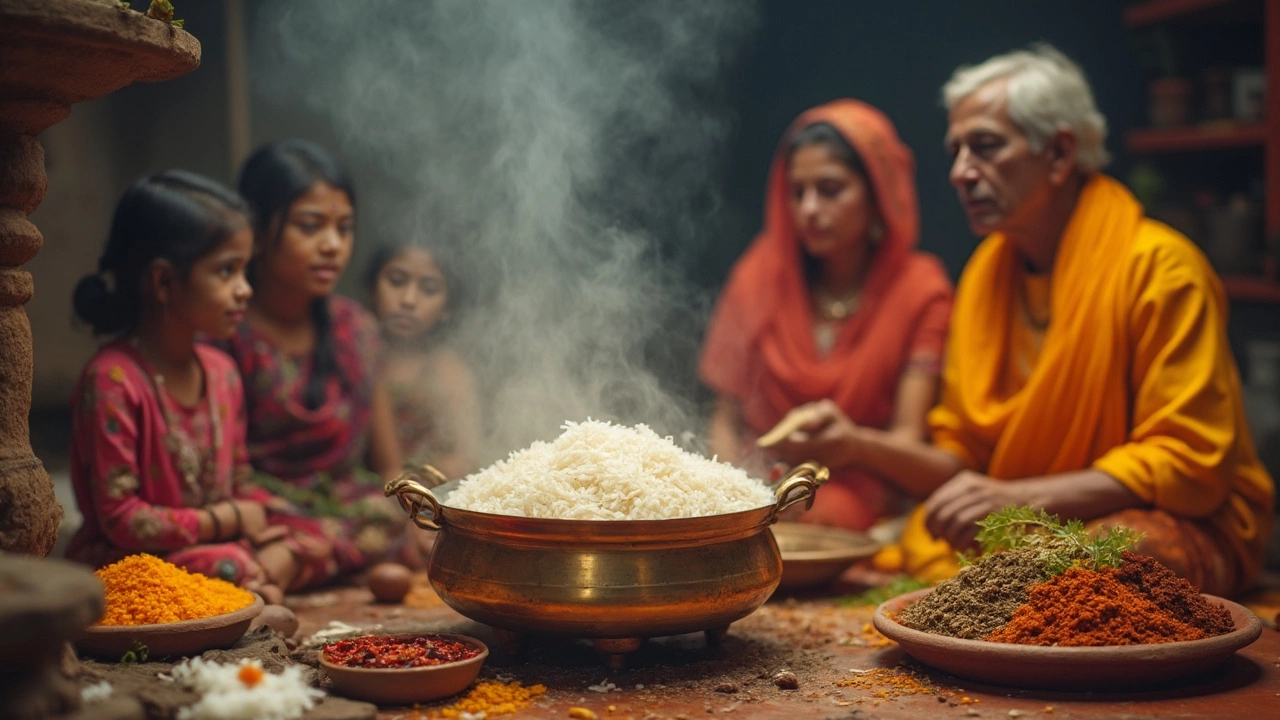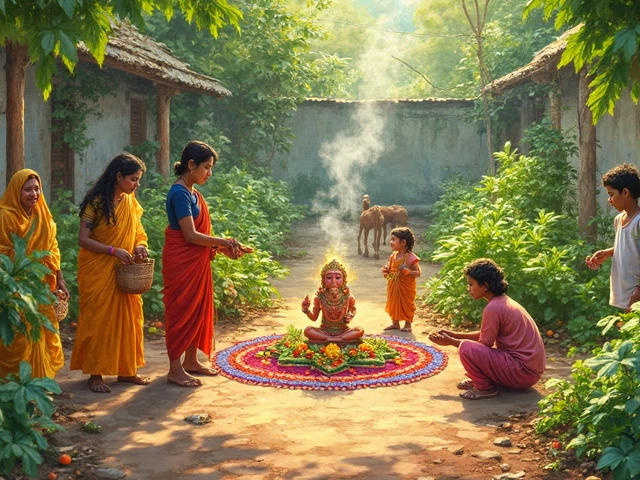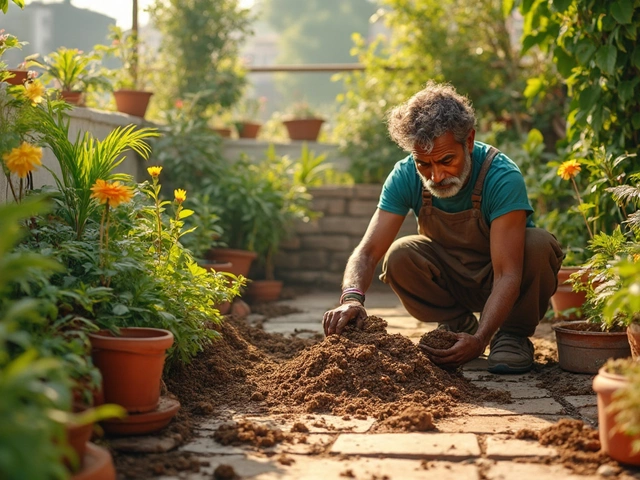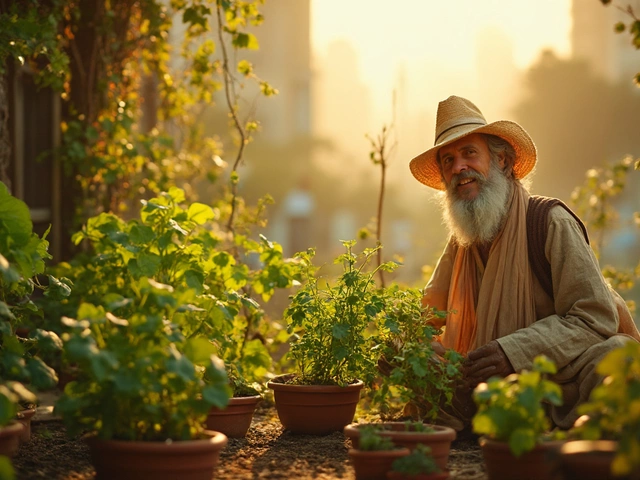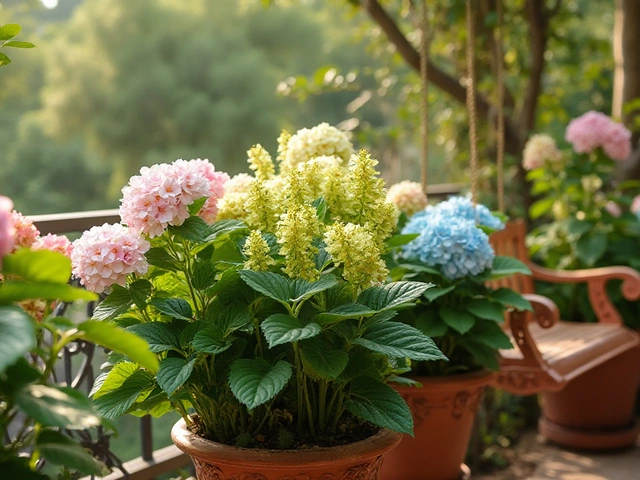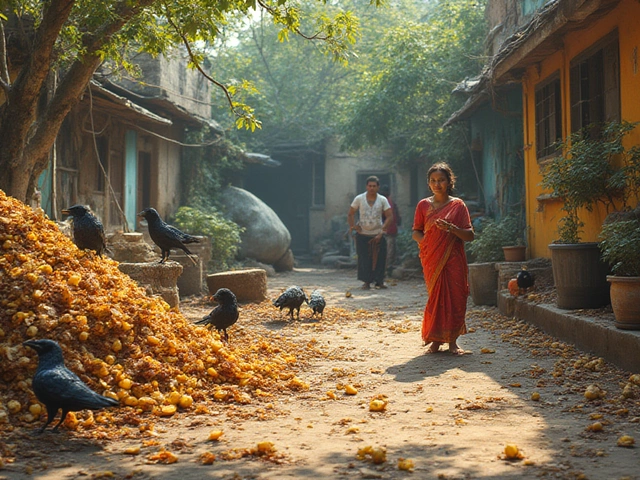So you’ve measured out 2 cups of uncooked rice, and now the big question is: how much cooked rice will that make? Typically, 2 cups of uncooked rice will yield about 6 cups of cooked rice. Amazing, right? This is because rice absorbs water and swells during cooking.
Here’s the trick though, the exact amount does depend on the type of rice you’re using and how you cook it. With common varieties like long-grain white rice, the usual 1:3 ratio holds true; although, brown rice or aromatic types like basmati may shift this a bit. The key is knowing what you’re dealing with!
Now, let’s sneak a peek into why some rice types expand more than others. It's all about absorption, folks. Some rice varieties hold onto moisture better, creating that fluffy texture we all crave. And hey, if you’ve ever found your rice looking a little sad and sticky, it might be how you’re cooking it. Turns out, rice-making is a bit of an art!
- The Basics of Rice Conversion
- Factors Influencing Rice Yield
- Science Behind Rice Expansion
- Types of Rice and Their Yields
- Tips for Perfectly Cooked Rice
- Fun Facts About Rice
The Basics of Rice Conversion
Understanding the conversion of uncooked rice to cooked is crucial, especially if you want to cook efficiently without waste. Most people start with 2 cups uncooked rice and expect it to expand as it cooks. Generally speaking, for white rice, you're looking at a yield of about three times the original amount. That means 2 cups uncooked usually ends up as 6 cups of cooked rice.
Why does this matter? Well, knowing this conversion helps in meal planning. Whether you're cooking for a family dinner or just preparing an individual meal, these measurements can help you gauge the right amount so you don’t end up with a rice avalanche!
Factors That Influence Rice Yield
It's not always a straightforward 1:3 ratio, though. The type of rice you're using can affect this. Brown rice, for example, won't expand quite as much, often yielding a bit less than white rice because it absorbs water differently. And if you've got basmati rice, well, that tends to fluff up nicely but might surprise you by not quite reaching that triple mark.
How to Measure Correctly
Want to get it right every time? Accurately measuring your rice can be a game-changer. Aim for a leveled cup when measuring uncooked rice. An overfilled cup might skew your ratios and result in unpredictable quantities of cooked rice.
- Use a standard measuring cup for consistency.
- Level the rice with a flat edge before cooking.
- Stick to the cooking instructions for your specific rice type—ratios can vary!
Struggling with conversions, or just curious? Here's a quick reference table:
| Rice Type | Uncooked to Cooked Ratio |
|---|---|
| White Rice | 1:3 |
| Brown Rice | 1:2.5 |
| Basmati Rice | 1:3 |
So next time you're pulling out the measuring cup, keep these tips in mind. Knowing the right ratios can save you from a mountain of leftovers or, worse, running short when you're serving a crowd!
Factors Influencing Rice Yield
Alright, let’s get into what affects rice yield when you’re cooking, because it’s not just a simple matter of throwing rice on the stove and hoping for the best. One major factor is the type of rice. Different varieties of rice have different moisture absorption rates. For example, jasmine rice tends to absorb a little more water compared to regular long-grain white rice.
Water quantity and quality play a big role too. If your rice isn’t coming out right, it might be the water-rice ratio that's off. Using too much water can make your rice mushy, while too little can leave it hard and uncooked. Also, minerals in hard water can affect the texture.
Cooking Techniques
The way you cook rice, like boiling or steaming, makes a difference. Boiling is quicker but might result in more sticky rice if not monitored closely. Steaming might take longer but gives every grain a chance to cook evenly, especially with those harder-to-cook types like brown rice.
Cooking Equipment
Don’t underestimate how your gear can change rice yield. Rice cookers are great because they're designed to handle all sorts of rice types with ease. But if you’re cooking on the stove, you’ve got to keep a close eye on the temperature. Too hot, and you might end up with burnt rice at the bottom of the pot.
Climate of rice cultivation regions can also matter. Did you know that rice grown in tropical climates tends to be more starchy? This affects how it cooks and expands. Depending on where your rice is from, you might notice subtle differences in cooking outcomes.
| Rice Type | Water Ratio | Cook Time |
|---|---|---|
| Jasmine Rice | 1:1.5 | 12-15 mins |
| Brown Rice | 1:2 | 20-25 mins |
| Basmati Rice | 1:1.75 | 15-20 mins |
Keep these factors in mind next time you’re in the kitchen, and you’ll nail that perfect pot of rice every time!
Science Behind Rice Expansion
Ever wondered what makes uncooked rice swell up into those fluffy, tempting morsels? Let's break it down. At its simplest, rice expansion is about water absorption. The grains suck in water as they cook, causing them to swell and increase in volume. But, there’s a bit more to it than just that!
Water Absorption Explained
Rice grains are made up of starch, amylose, and amylopectin. When you start cooking, the heat causes the starches to gelatinize. This means they soak up water and expand, turning each grain soft. Different rice types have varying levels of amylose and amylopectin, which explains why some cook up fluffy and separate, like long-grain rice, while others become sticky.
The Role of Amylose and Amylopectin
Rice like basmati has more amylose, making it less sticky when cooked. In contrast, sticky or glutinous rice (despite the name, it's gluten-free) is high in amylopectin, giving it that characteristically sticky texture. Fun fact: generally, the higher the amylose content, the less the rice increases in volume when cooked.
Influence of Cooking Technique
Technique also matters! Ever wondered why rice cookers are so popular? They control the heat and moisture perfectly, ensuring maximum expansion. But you can achieve great results on the stove too by adjusting the ratio of water to uncooked rice based on the rice type and desired texture.
Types of Rice and Their Expansion
| Rice Type | Uncooked to Cooked Ratio |
|---|---|
| Long-Grain White | 1:3 |
| Basmati | 1:3 |
| Brown Rice | 1:2.5 |
| Sticky Rice | 1:2 |
Each type requires a bit of a different touch, but the goal is the same: perfect, fluffy rice every time.
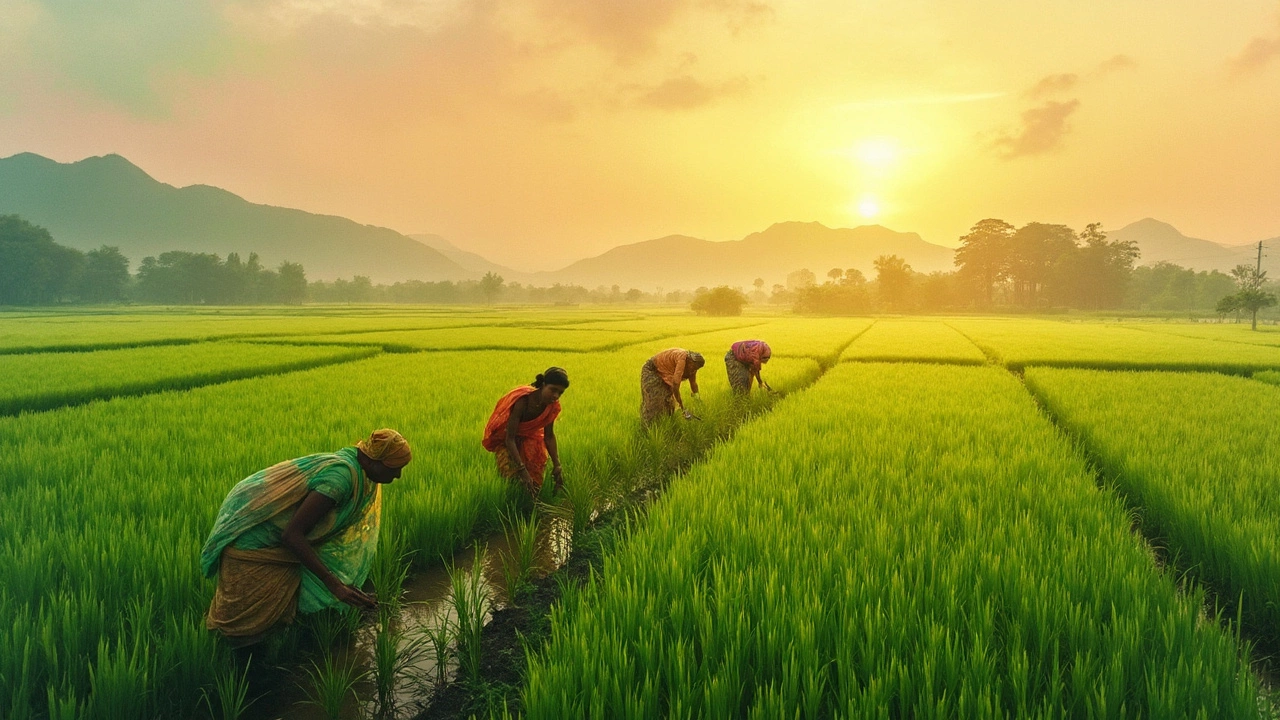
Types of Rice and Their Yields
Diving into the world of rice can be quite fascinating. Different types of rice have different yields, and knowing what to expect can help you cook the perfect batch every time. While the typical 1:3 ratio for rice conversion holds for many kinds, let's see how some popular varieties measure up.
Long-Grain White Rice
The superstar in many kitchens, long-grain white rice is known for its fluffy texture when cooked. With this one, you’ll generally see your uncooked rice triple in size. Hence, those 2 cups of uncooked rice can easily turn into about 6 cups of cooked goodness.
Brown Rice
It's the healthier cousin with a bit more chew to it. Brown rice is whole grain, which means it retains more of the plant’s original nutrients. When cooked, it usually hits a 1:2.5 ratio. So, plan for 2 cups of uncooked brown rice to give you about 5 cups cooked.
Basmati Rice
Talk about flair! Basmati expands a lot during cooking — sometimes even more than other varieties. It typically follows a 1:3 ratio, but the grains stretch longer, lending to that signature fluffiness and aroma that makes it a favorite in many dishes.
Jasmine Rice
If you’ve ever enjoyed a dish with jasmine rice, you know it's all about fragrance. This type expands to roughly the same 1:3 ratio as its white rice counterpart. So, your 2 cups uncooked should give you around 6 cups cooked.
Arborio Rice
This is the creamy king of risotto. Arborio has a high starch content, which accounts for its creamy texture. Here, it’s more like a 1:2 ratio. So, think 2 cups uncooked turns into about 4 cups cooked, but much more creamy and dense.
Keep in mind, cooking methods can tweak these expectations slightly. But knowing these typical yields can help you plan your meals and avoid any last-minute, unexpected rice challenges.
Tips for Perfectly Cooked Rice
Getting rice just right can be tricky, but once you master it, you’ll have perfectly cooked grains every time. Here are some rice conversion tips that work wonders:
Rinse Your Rice
Before cooking, rinse your rice under cold water to remove excess starch. This helps prevent it from becoming too sticky. Make sure the water runs clear before you stop rinsing.
Water Ratio Matters
The typical uncooked rice yield rule is a 1:2 ratio (1 cup of rice to 2 cups of water) for most white rice. But for brown rice, try a 1:2.5 ratio due to its tougher outer layer.
Let It Simmer
Bring the water to a boil, add a pinch of salt, then stir in your rice. Lower the heat to a simmer and cover the pot with a tight-fitting lid. This steam-trapping technique ensures even cooking.
Don’t Peek!
Resist the temptation to lift the lid during cooking. This lets out steam and can mess with the cooking process, impacting your final yield. Set a timer instead and trust the process.
Fluff It Up
Once cooked, let the rice sit off the heat for about 5-10 minutes with the lid on. Use a fork to fluff it gently before serving. This prevents clumping and gives your rice a light, airy texture.
Experiment with Types
- Long-grain white rice is great for a fluffy texture.
- Basmati and jasmine rice offer aromatic goodness with a touch of elegance.
- Brown rice packs extra nutrients with a nuttier flavor but requires a bit more time and water.
Next time you’re about to cook, keep these tips handy. With a bit of practice, you’ll never have mushy or crunchy rice again!
Fun Facts About Rice
Did you know rice feeds more than half the world’s population? That’s no small feat! As a staple grain, rice packs quite a punch in both nutrition and versatility.
Rice Varieties Galore
There are over 40,000 different types of rice out there. Yeah, you read that right! Each variety thrives in different climates and has unique textures and flavors. From jasmine’s fragrant aroma to the chewy bite of sushi rice, there’s something for everyone.
Ancient Roots
Rice is no newbie on the agricultural scene. It’s been cultivated for over 5,000 years, with Asia being a major player. Can you imagine all the generations of farmers that have relied on this grain?
Thirsty Plant
Rice cultivation needs a lot of water. A single kilogram of rice can require up to 5,000 liters of water to grow! Water management is crucial, especially in areas where water can be scarce.
Record-breaking Rice
Ever heard about the world's largest bowl of fried rice? It was cooked up in Yangzhou, China, weighing in at an astonishing 4,192 kilograms! Talk about a feast.
Rice and Environment
Rice paddies don’t just grow rice; they’re crucial ecosystems home to heaps of wildlife. In many countries, they support biodiversity by providing habitats for birds and aquatic species.
Fascinated yet? Next time you dig into a bowl of your favorite rice dish, remember, it’s not just food — it’s a grain loaded with history, culture, and some pretty wild statistics!
